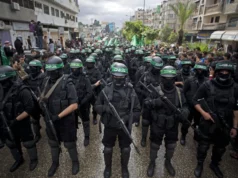Nine years ago today, the U.S.-led war into Afghanistan began. This week, Afghan President Hamid Karzai and representatives of the Taliban started secret, high-level talks aimed at ending the war. While emphasizing the preliminary nature of the discussions, sources say that for the first time, Taliban representatives are authorized to speak for the Quetta Shura, the Afghan Taliban organization based in Pakistan, and its leader, Mohammad Omar. “They are very, very serious about finding a way out,” one source said of the Taliban.
In the past, Omar’s representatives have insisted that all foreign troops withdraw before negotiations could begin. However, according to reports, the Quetta Shura is ready to discuss a comprehensive agreement that would include participation of some Taliban figures in the government and a time-lined withdrawal of U.S. and NATO troops from Afghanistan.

Afghan President Hamid Karzai |
|
President Karzai has continuously said he will talk to insurgents only if they renounce violence, sever ties with terrorists, and embrace the Afghan constitution. However, worryingly, reports now claim that the Afghan government is willing to abandon some previously announced “red lines” in an attempt to kick-start negotiations, such as the demand that the Taliban recognize the constitution and lay down arms.
If true, starting talks with the Taliban at this point would be devastating. Afghanistan has no chance of becoming a stable, peaceful nation in the future if its government doesn’t force the insurgents to lay down their weapons in exchange for talks today. History, as well as common sense, has shown that allowing militias to operate separate from the government inside any country is a recipe for disaster.





